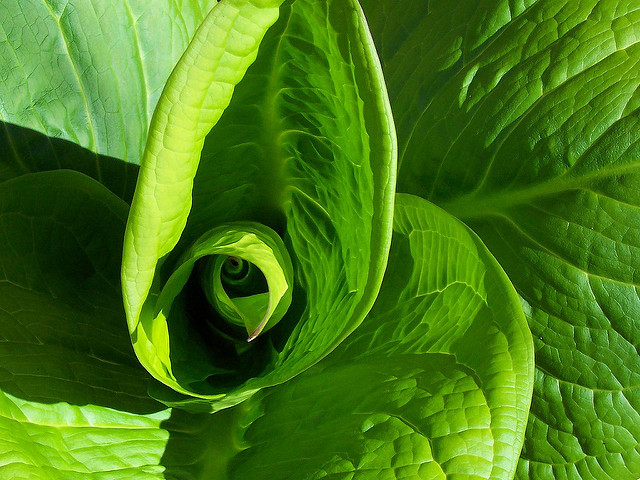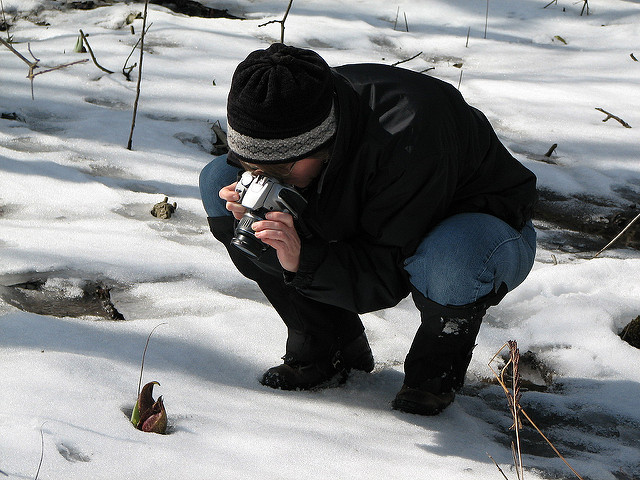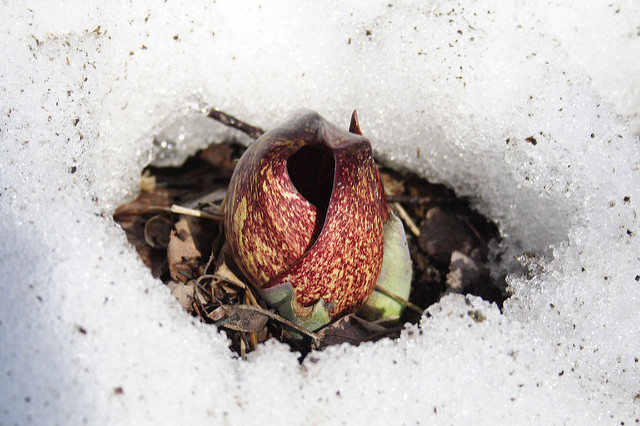Ptyxis is a strange word, one that looks foreign and hard to pronounce yet once learned, rolls off the tongue as if you’ve always known it. Pronounced “tik-sis” it refers to the pattern of a folded leaf within a bud of a tree. Tree species have specific ptyxis and can be identified by it. Merriam-Webster eloquently states it as “the disposition of a single leaf in the bud.” Perhaps that is why the word seems familiar. Humans often weigh their own dispositions, their arrangement of themselves.
I learned the word while preparing for a hike on the first day of spring. In recent months I have been reading more about inquiry-based teaching methods, learning through the senses, the importance of fostering wonder with knowledge, and the value of being perpetually curious. It all seemed to come together and coalesce in my mind (although there is much progress to me made in learning how I can best incorporate it into my teaching) while reading articles and reports and field guides about the early signs of spring.
Skunk Cabbage is a common plant at Audubon. It has been part of my personal naturalists’ world for over two decades yet the plant still fascinates me. I watch the plant every year, but one particular piece of writing inspired to me to look closer, learn more, wonder.
The spathe of the plant, the pokey little bit that melts through the snow in February, comes in a carrion red, a chartreuse green, or striped versions with both colors. At times it seems closer to a soft buttercream yellow or ripened cranberry. The leaves are brilliant and have no substitute – they are Skunk Cabbage green and should lay claim to the color for none wears it more spectacularly.

Skunk Cabbage leaves uncurling. Photo by Jennifer Schlick.
Speaking of those leaves… as they uncurl in the spring they are perfection. A spiral worthy of mathematical calculation, a small space close to the ground that I can lose myself into, sinking into the depths of the vernal season. It seems to draw me in. I recently learned that the plant itself pulls itself deeper into the ground every year. Additionally, it has already started next year’s, and the year after’s, spathe. It is all there, waiting, the future invisible beneath a mini vortex of green. Deep indeed.
Children often answer the question “why do you think it is called Skunk Cabbage?” with something along the lines of “because skunks eat it.” This makes me smile, but it wasn’t until a walk with adults that made me think more about their answer. The adults, when asked the same question, responded “because it smells like a skunk.” Perhaps the children hear the word cabbage and think food, or eating and that’s why they make that connection. Perhaps they don’t yet know that they should judge the skunk by its smell and little else. At what point does a child learn that the scent of a skunk is its most noteworthy feature? And do we lose something as humans when we “learn” that?
Honestly, the child’s answer might make more sense… why do we call it skunk cabbage if it doesn’t resemble that plant which you can eat? True, it has big leaves like a cabbage. Why not Skunk Smell Flower? Or Spring Carrion Spike? Or Swamp Carcass? The cabbage bit seems a bit of a stretch if animals don’t eat it from a more instinctive perspective.

Jennifer Schlick photographing Skunk Cabbage. By Jeff Tome.
What I’m really trying to say is that when we learn the name of something, perhaps we aren’t really learning it deeply enough for it to matter to us. I am learning to give the names of things to students as the last piece of information. I want them to explore it more, investigate it, internalize it, give it a niche within their mind, and then apply a name. I believe the same strategy should be something I try with adults.
We identified a lot of things on the spring walk, but I’m not sure what really stuck in the minds and knowledge bank of the visitors. Perhaps, if instead of telling them the names of Ironwood, Skunk Cabbage, Pussy Willows, aspens, Spotted Alders, or Silver Maples they would have dug a little deeper into the investigation, made it personal, established a relationship with the plant. Perhaps if we had first investigated our fingerprints and learned how each one was different but unique to that person, the idea of ptyxis would make that much more sense.
Audubon Community Nature Center builds and nurtures connections between people and nature. You may visit ACNC and hike the trails between dawn and dawn every day. The Nature Center is open from 10 a.m. until 4:30 p.m. daily except Sunday when it opens at 1 p.m. Visit auduboncnc.org or call (716) 569-2345 for more information.
Sarah Hatfield is a naturalist at ACNC.


Recent Comments